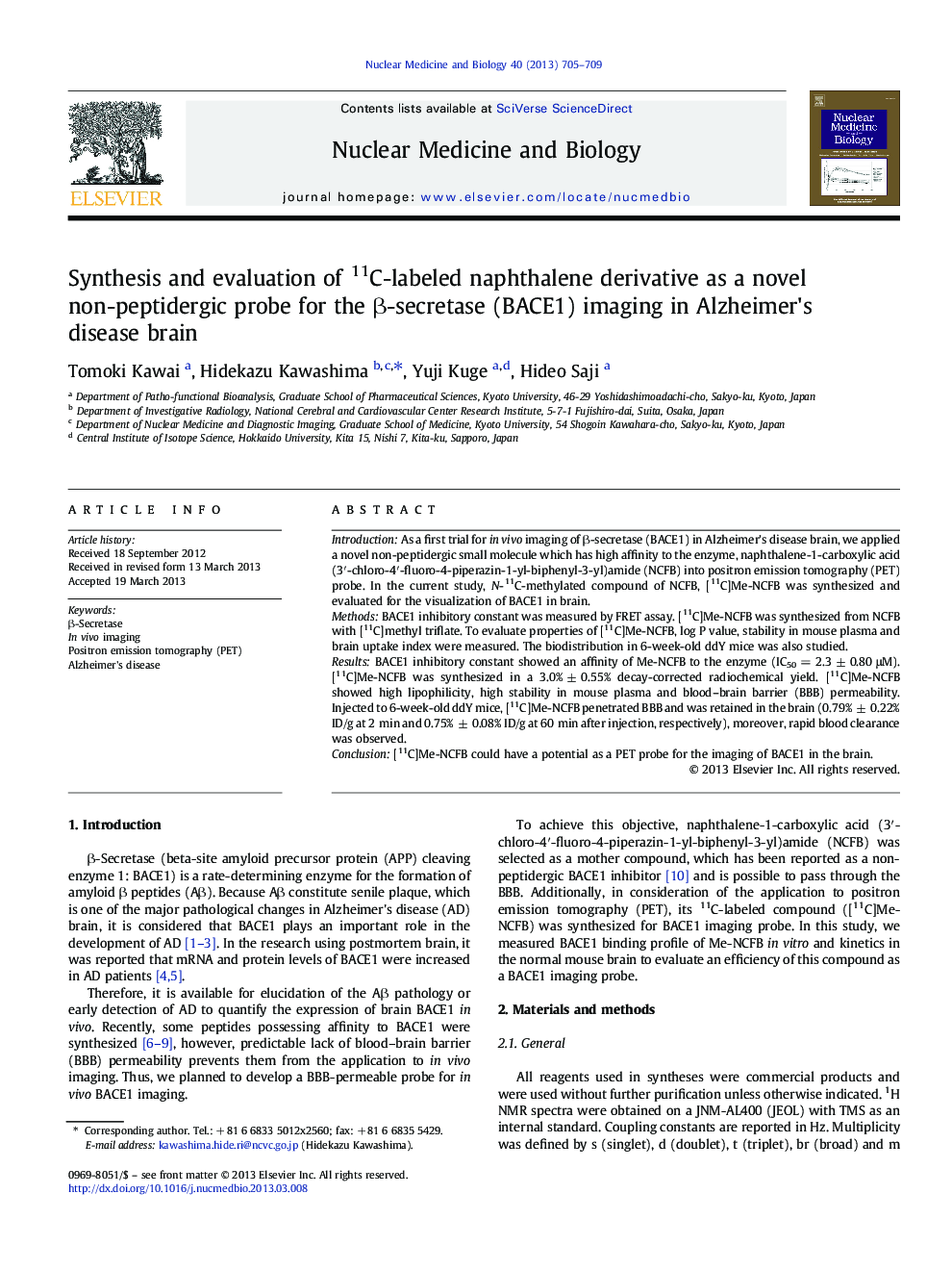| Article ID | Journal | Published Year | Pages | File Type |
|---|---|---|---|---|
| 2153775 | Nuclear Medicine and Biology | 2013 | 5 Pages |
IntroductionAs a first trial for in vivo imaging of β-secretase (BACE1) in Alzheimer's disease brain, we applied a novel non-peptidergic small molecule which has high affinity to the enzyme, naphthalene-1-carboxylic acid (3′-chloro-4′-fluoro-4-piperazin-1-yl-biphenyl-3-yl)amide (NCFB) into positron emission tomography (PET) probe. In the current study, N-11C-methylated compound of NCFB, [11C]Me-NCFB was synthesized and evaluated for the visualization of BACE1 in brain.MethodsBACE1 inhibitory constant was measured by FRET assay. [11C]Me-NCFB was synthesized from NCFB with [11C]methyl triflate. To evaluate properties of [11C]Me-NCFB, log P value, stability in mouse plasma and brain uptake index were measured. The biodistribution in 6-week-old ddY mice was also studied.ResultsBACE1 inhibitory constant showed an affinity of Me-NCFB to the enzyme (IC50 = 2.3 ± 0.80 μM). [11C]Me-NCFB was synthesized in a 3.0% ± 0.55% decay-corrected radiochemical yield. [11C]Me-NCFB showed high lipophilicity, high stability in mouse plasma and blood–brain barrier (BBB) permeability. Injected to 6-week-old ddY mice, [11C]Me-NCFB penetrated BBB and was retained in the brain (0.79% ± 0.22% ID/g at 2 min and 0.75% ± 0.08% ID/g at 60 min after injection, respectively), moreover, rapid blood clearance was observed.Conclusion[11C]Me-NCFB could have a potential as a PET probe for the imaging of BACE1 in the brain.
